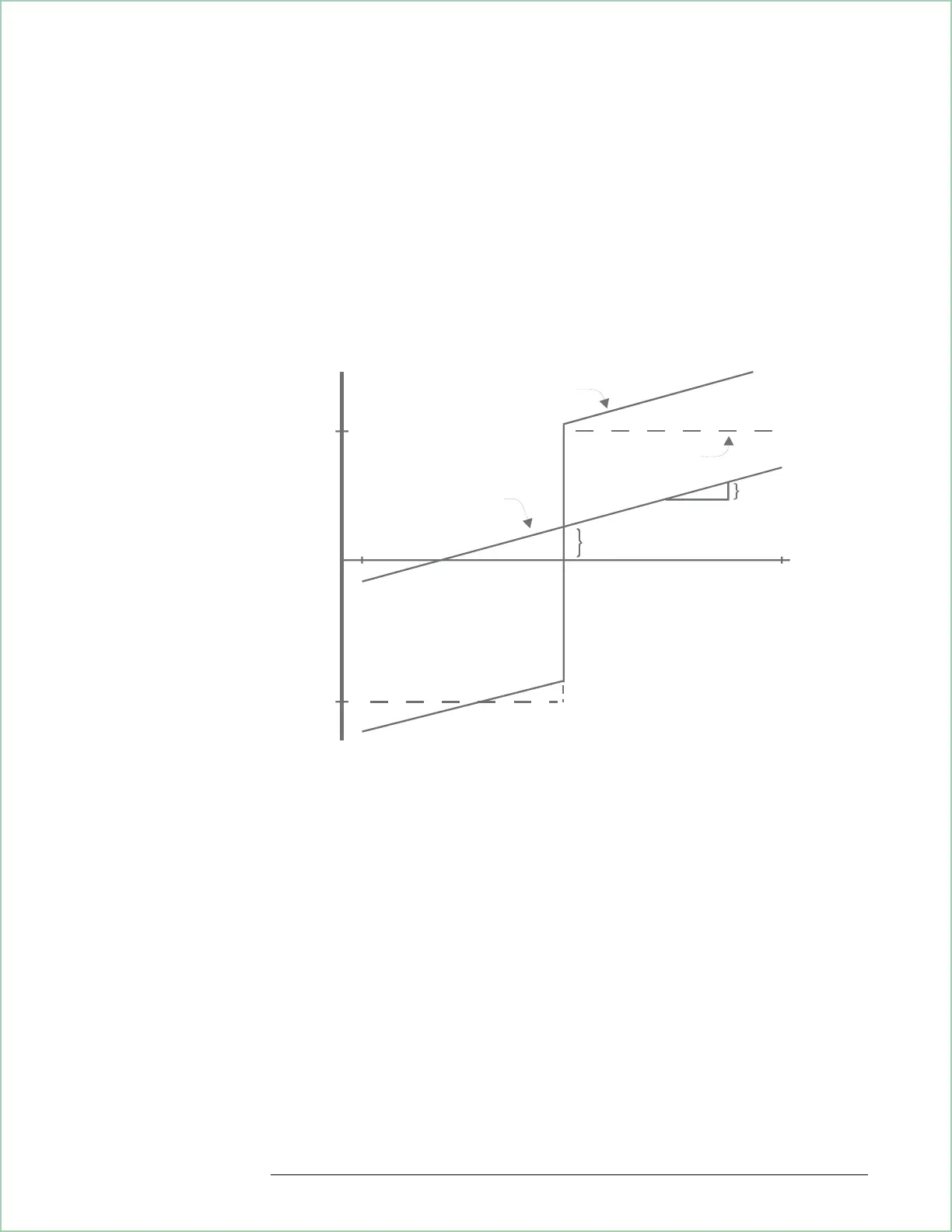The square root of the average magnitude squared is used to set the overall gain
adjustment. This minimizes the absolute error across the 20 MHz bandwidth
rather than the error at the center frequency.
The average ratio is used to determine the gain mismatch. The gain and delay
parameters are used to configure the external calibration parameters of the
vector signal analyzer. It’s worth noting that the errors are quite small. For
example, the delay mismatch is usually less than 100 psec.
Effects of Quadrature Error and Delay Mismatch
Measured Phase
+90 deg
Phase Error
(measured Delay)
Ideal Phase
Slope is caused by
delay mismatch
10 Mhz
0 Hz
-10 Mhz
-90 deg
Offset is caused by quadrature error
For a sinusoidal input,
I and Q outputs should
also be sinusoidal and
should have a phase
difference of exactly
+/-90 degrees.
Quadrature error and
delay mismatch
between channels
introduce a phase error
that is a function of the
relationship between
the center frequency of
the measurement and
the frequency of the
input signal.
Extending Analysis to 26.5 GHz with 20 MHz Information Bandwidth
16 - 21

